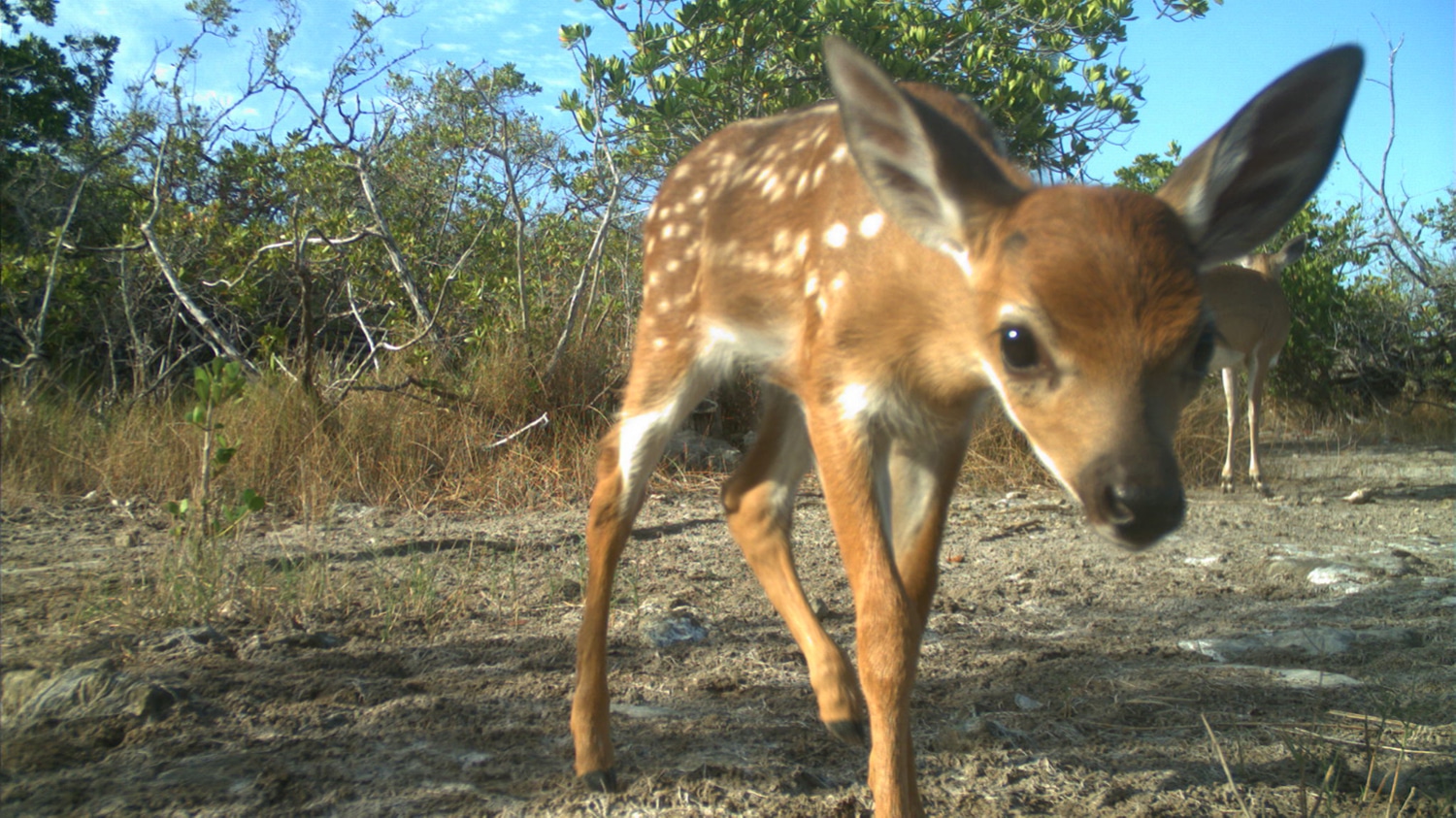Endangered Key Deer Fawns Vulnerable to Heat Stress as Sea Level Rises, Study Finds

As rising seas destroy low-elevation habitats in South Florida, Key deer fawns could become more vulnerable to heat stress, according to a recently published study led by NC State University.
The study, which appeared in the February issue of the MDPI journal Diversity, found that Key deer fawns were most abundant in low-elevation habitats within the National Key Deer Refuge on Big Pine Key in Florida. It also found that adult females were most abundant in upland habitats.
Low-elevation habitats within the refuge mostly consist of dense wetland plant communities and provide important cover for fawns during the summer months, according to Julia Jacobs, the study’s lead author and a 2017 alumna who conducted the research as an undergraduate student at the College of Natural Resources.
“Key deer do not have natural predators on the island, so we predict that the cover is more important for thermal regulation during the hot Florida summers than it is for anti-predation protection,” Jacobs said.
Unfortunately, sea level is projected to rise by as much as 2.5 feet in the Keys and other parts of South Florida by 2060, inundating low-elevation habitats and leaving Key deer fawns vulnerable to heat stress.
“Previously the driving threat to Key deer was believed to be habitat loss with increased urbanization and increased fawn mortalities from motor vehicles, but now we understand that habitat loss from sea level rise might be more of a driving force in the coming years,” Jacobs said.
In a novel approach, Jacobs and her collaborators from the University of Florida and the North Carolina Museum of Natural Sciences examined more than 350 images from over 50 camera traps throughout the National Key Deer Refuge in order to identify fawns and to estimate their abundance across various habitats.
“Using camera traps is a noninvasive method that has been used to determine population estimates for uniquely identifiable species,” Jacobs said. “During this study, we were able to determine that fawns are uniquely identifiable based on their spot pattern.”
Jacob’s added that the study’s results will ultimately help to guide management decisions for the Key deer population, especially as the U.S. Fish and Wildlife Service considers whether to remove the animals from the Endangered Species List.
Key deer, a subspecies of white-tailed deer endemic to the Florida Keys, experienced population declines in the 1950s due to habitat loss and hunting pressure, leading the U.S. Fish and Wildlife Service to designate approximately 8,000 acres in the Lower Keys as the National Key Deer Refuge. The agency later added the Key deer to the Endangered Species List in 1967, allowing the population to increase and stabilize. Still, fewer than 1,000 Key deer remain in the refuge.
Going forward, Jacobs and her collaborators plan to develop an educational outreach project for elementary school students. The project, called “Connecting the Spots,” will require students to examine photos of Key deer and to identify spot patterns.
“The students will talk about how many different deer they found and if they found multiple of the same deer,” Jacobs said. “This project encourages kids to slow down and look closely at the world around them and it shows how much fun science and conservation work can be.”
This post was originally published in College of Natural Resources News.
- Categories:


